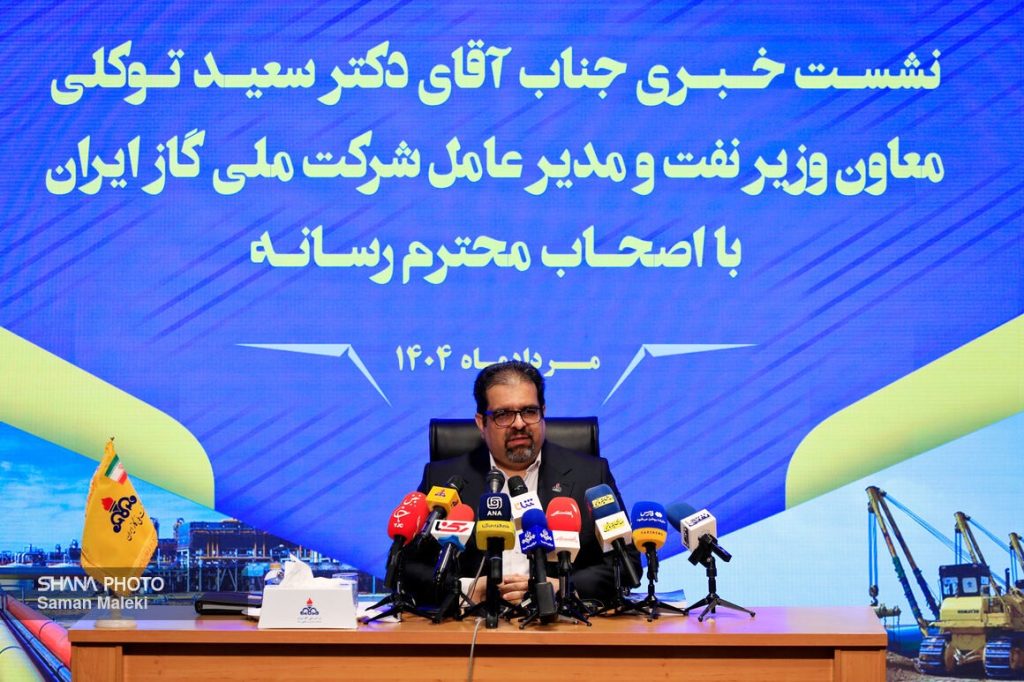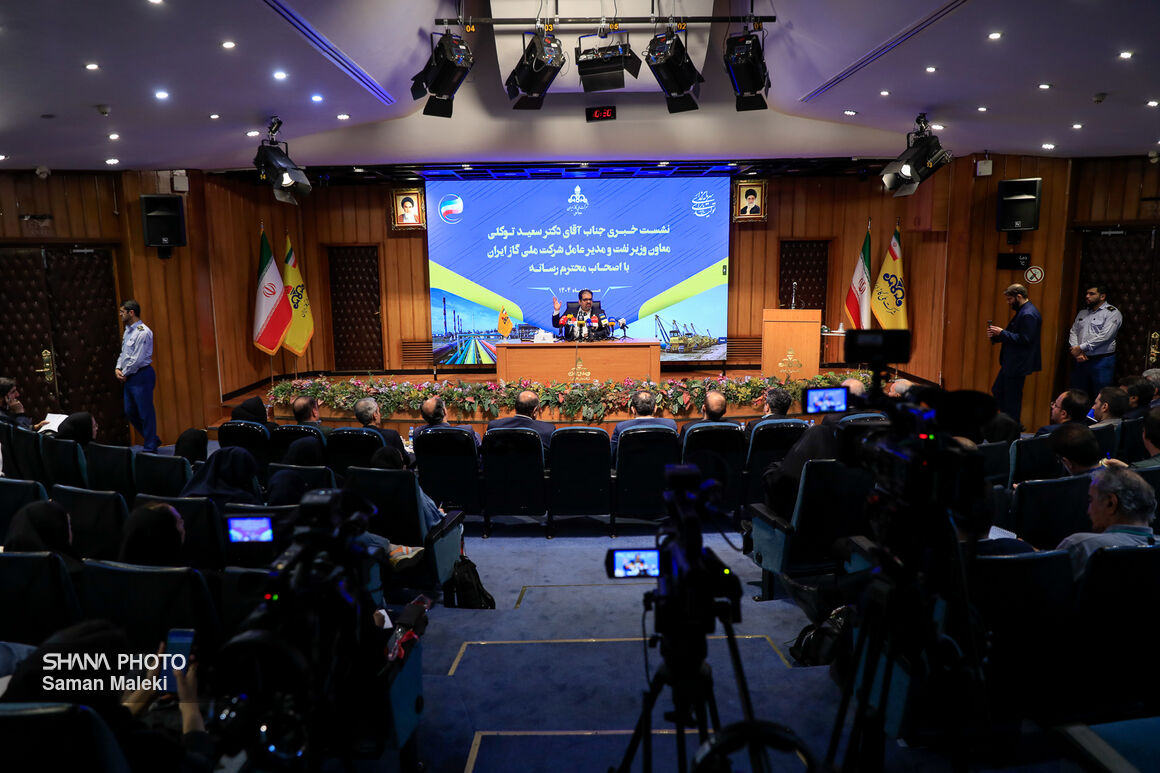As winter 2026 approaches, Iran is gearing up for stable gas supply through domestic expertise and integrated management.
Saeid Tavakoli, Managing Director of the National Iranian Gas Company (NIGC), highlighted a 300 to 350 million cubic meter energy imbalance while announcing a 60% increase in power plant reserves and the implementation of major gas supply projects.
Despite challenges such as recent conflicts and attacks on infrastructure, the country’s gas network has maintained stability through rapid repairs, such as the restoration of the export pipeline to Turkey in under 24 hours.
Innovative initiatives like gas storage in the Nasrabad salt dome, the “2 Degrees Less” campaign, and the replacement of low-efficiency heaters promise optimized consumption and a winter free of domestic gas outages.
In the realm of energy diplomacy, Iran has solidified its position as a key player in the regional energy market by continuing gas exports to Iraq and Turkey and making significant progress in negotiations with Russia, while taking bold steps toward diversifying its energy portfolio with renewable sources.
Government Week Achievements
According to Gas Bonyan, Saeed Tavakoli, Deputy Oil Minister and NIGC Managing Director, stated at a press conference on Tuesday (August 19, 2025), held on the eve of Government Week: This year, during Government Week, numerous projects will be launched, including gas supply to 5 cities, 428 villages, and 1,753 industrial units, the commissioning of 330 kilometers of new gas transmission pipelines, 4 gas pressure boosting facilities in Dehshir and Borazjan, and the Sari pipeline operations center.
The Deputy Oil Minister added: These projects, implemented with an investment of 5.6 trillion tomans, 127.5 million euros for pressure boosting stations, and 184 million euros for new transmission lines, contribute to network stability, particularly in the northern regions.
Tavakoli further noted: The implementation of 688 urban, rural, and industrial gas supply projects worth 15 trillion tomans and 229 kilometers of national and secondary pipelines valued at 255 million euros (including the 10th national pipeline and the Pol-e Kalleh to Tehran line at 140 million euros, and the southeast line spanning 126 kilometers at 115 million euros) will commence.
Nasrabad Salt Dome Storage Project
The head of Iran’s gas industry continued: The innovative gas storage project in the Nasrabad salt dome, with a 340 million euro investment, is located near the country’s energy hub and designed for hydrocarbon and gas storage, marking a technological first in Iran.
He emphasized: The strategic location of this dome enhances network resilience.

Successful Performance in the Harsh Winter of 2024
Tavakoli, referring to last winter’s 5.5-month duration, stated: Despite a 300 to 350 million cubic meter energy imbalance, no domestic gas outages occurred.
He added: This success stemmed from the Oil Ministry’s integrated management, the early formation of fuel coordination committees, and adequate liquid fuel storage.
Tavakoli noted: The autumn of 2023 was the warmest in 50 years, yet the company prepared meticulously for tougher conditions.
Sadegh 2 Drill and Crisis Preparedness
The official stated that conducting the Sadegh 2 drill to practice responses to emergency scenarios like war or unforeseen incidents helped protect energy infrastructure. He added that major repairs, including the online repair of the 8th nationwide pipeline with 12 weld cracks and the postponement of Fajar Jam refinery maintenance, were carried out with calculated engineering risks. As a result, 22 turbocompressor units remained in service despite reaching their maintenance deadline, with a 21% increase in operational performance. For the first time, 208 turbocompressors and 28 turbocompressors operated simultaneously over three-day periods. The Shahid Hasheminejad and South Pars refineries operated with high reliability (up to 5% improvement) without interruption.
“Two Degrees Less” Campaign
The CEO of the National Iranian Gas Company (NIGC) highlighted the success of last year’s “Two Degrees Less” campaign, stating that the involvement of the Interior Minister and provincial governors in energy crisis management elevated the issue to a national level, ensuring network stability through inter-provincial cooperation. He rated his team’s performance as “excellent,” noting their strong performance despite uncontrollable constraints.
60% Increase in Power Plant Reserves
The official announced a 60% increase in power plant reserves compared to the same period last year. Combined with precise planning by the Oil Ministry, this ensures network stability for the upcoming winter. He emphasized that despite challenges, including the recent 12-day war, NIGC is prepared to navigate the winter without gas outages, relying on domestic capabilities.

Gas Supply Stability During Wartime
The Deputy Oil Minister, referring to the 12-day war and attacks on Tehran and other areas, said that full preparedness and round-the-clock presence of emergency teams prevented secondary incidents. In the case of a projectile hitting the 48-inch export pipeline to Turkey, the line was repaired and restored to service in under 24 hours. He attributed this success to unity and social capital, expressing gratitude to the dedicated emergency responders who remained on duty during the crisis. He noted that while many Tehran residents evacuated, responders stayed at their posts, some resting by the roadside after long shifts.
Consumption Management and Incentives
On consumption management, the official explained that price increases were applied to high and very high consumers, while 85–90% of domestic users saw no significant price hikes. Incentives, such as improving heater efficiency, installing double-glazed windows, and cash payments without financial burden on the government, are being implemented. A contract for 1.725 million low-consumption heaters has been signed, with 300,000 units to be distributed by year-end. These heaters, with 85–95% efficiency, replace current models with around 30% efficiency, significantly reducing consumption. Studies show heating and cooling systems account for 70–80% of building energy use, while appliances like stoves contribute less than 2%.
Energy Exchange Collaboration
The NIGC CEO discussed the energy exchange, noting that trading 800 million cubic meters of gas at 17,350 IRR per unit has supported industrial needs. This approach has built market trust and serves as an effective solution for productive sectors.
Gas Negotiations with Russia and Turkmenistan
Regarding negotiations with Russia, he said they are 95–99% complete but remain unfinalized due to political and regional factors. An initial agreement for 55 billion cubic meters of gas in two phases has shifted to a smaller volume, with phased implementation likely. The goal is to use imported gas for productive sectors. Negotiations with Turkmenistan for gas swaps to Turkey continue, with relevant contracts submitted. Gas exports to Iraq are ongoing, and talks for a long-term contract extension with Turkey are in progress.
Pipeline Monitoring and Energy Efficiency
The official highlighted continuous monitoring of 40,000 km of high-pressure pipelines, ensuring no leaks go unaddressed and aging pipelines are replaced as planned. Annual leak detection and replacement of worn equipment, like valves, have minimized gas losses. Some gas leakage stems from auxiliary equipment, and specialized projects are underway to address this.
Managing Natural Hazards
On land subsidence and sinkholes, he noted that pipelines are designed with high safety margins, and no ruptures due to subsidence have been reported. Sinkholes in specific areas are managed through design foresight and rapid response by repair teams. He stressed the need for energy diversification and renewable sources, noting that providing both electricity and gas to all homes in Iran, unlike many countries, puts significant strain on the network.
Winter 2026 Outlook
The official stated that gas delivery to power plants has increased by 1.65%, and measures like installing low-consumption heaters have optimized energy use. During peak domestic consumption (720 million cubic meters per day), priority is given to household needs, with alternative fuels provided for other sectors. Critical industries like pharmaceuticals and food security have never faced gas cuts, but reducing gas allocations to petrochemicals in winter, coordinated with the Oil Ministry, is unavoidable.
Energy Efficiency Importance
He emphasized that energy imbalances cannot be resolved quickly and require cross-sector collaboration. Adhering to Chapter 19 of the National Building Code could reduce household energy use by up to 30%, freeing resources for industries. Low-efficiency industries, like some cement and brick units, harm the economy and environment and must upgrade equipment. He suggested industries focus on demanding efficiency improvements. He warned that widespread domestic gas outages, akin to an earthquake in Tehran, could delay network recovery by up to 100 days.
Energy Mix and Renewables
The gas industry leader concluded by noting Iran’s 95% gas penetration rate and 73% share in the energy mix (80% of power plants rely on gas), stressing the need for energy diversification. While gas network expansion was a past policy, transitioning to renewables is now essential.






